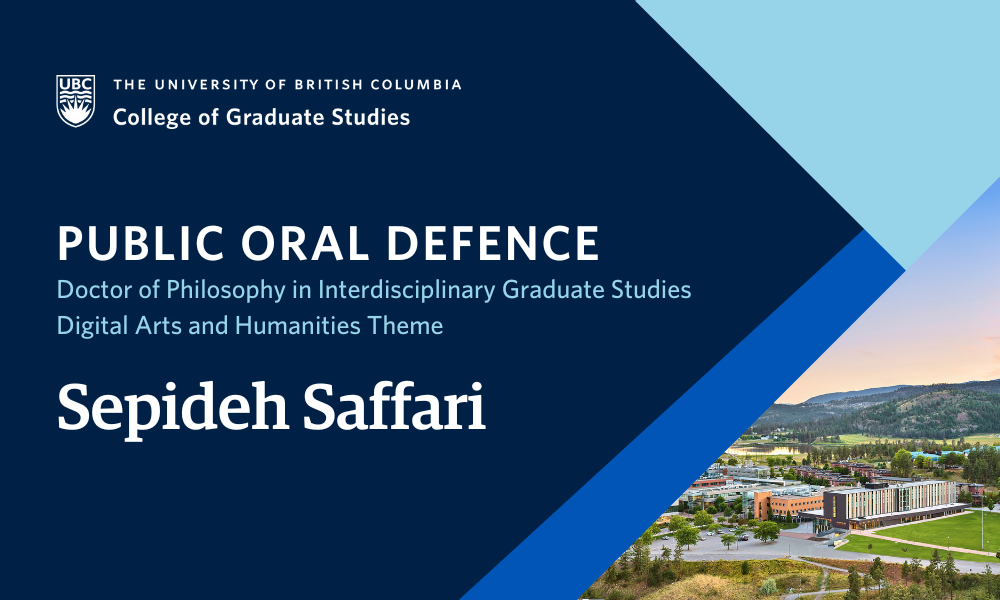
- This event has passed.
Dissertation Defence: Gardens Beyond Borders: Rethinking UNESCO’s Approach to Persianate Gardens Through Transnational and Multimodal Lenses
August 26, 2024 at 9:00 am - 1:00 pm

Sepideh Saffari, supervised by Dr. Hussein Keshani, will defend their dissertation titled “Gardens Beyond Borders: Rethinking UNESCO’s Approach to Persianate Gardens Through Transnational and Multimodal Lenses” in partial fulfillment of the requirements for the degree of Doctor of Philosophy in Interdisciplinary Graduate Studies – Digital Arts and Humanities theme.
An abstract for Sepideh Saffari’s dissertation is included below.
Examinations are open to all members of the campus community as well as the general public. This examination will be offered in hybrid format. Registration is not required to attend in person; however, please email hussein.keshani@ubc.ca to receive the Zoom link for this defence.
ABSTRACT
Persianate Gardens possess an interconnected history across current countries of Central Asia, Iranian and Deccan plateaus. The gardens’ shared history, embodied in their consistent design, spanned diverse geographical locations that are currently framed by modern national borders. Despite Persianate gardens’ transnational reach, most scholarship adopts national lenses while concentrating on documentation and forms. This nation-based outlook has deeply shaped the representation of Persianate Gardens, and this view is disseminated by the United Nations Educational, Scientific and Cultural Organization (UNESCO), arguably the world’s most significant cultural heritage organization. UNESCO’s nation-based outlook, which obscures the gardens’ fluid and dialogic nature, was further reinforced by UNESCO’s logocentric documentation and reports. Using visual data as ornamental materials conceals a holistic picture that can only be explored through visual and multimodal aspects of cultural heritage. Therefore, UNESCO’s interpretation of the Persianate Garden encourages a fragmented narrative of its history and development caused by its content and representation format.
To address these gaps, this research investigates the commonalities of Timurid, Safavid, and Mughal gardens through a transnational lens while exploring multimodal approaches to argument and representation. The study employs visual-centric methods, namely cognitive mapping, and content analysis (with a focus on visual comparative evaluation), alongside semi-3D modelling and graphical analysis for case studies assessment. A visual-centered methodology is imperative to examine the visual datasets of spatial layouts and heritage information. The study applies a new set of criteria to explore the potential for diminishing the significance of the gardens’ national classification while unfolding their connections and consistency. Rather than imposing an external set of universal principles for heritage evaluation, these criteria propose a new arrangement inspired by spatial qualities inherent in the gardens. They contextualize gardens within a broader network of collaborative and shared historical settings, contesting Eurocentric and biased heritage interpretation. While the research approaches transnational exchanges from multiple lenses, it mainly employs an architectural lens to reveal the Persianate gardens’ connections. Since the research form and content should be compatible, an interactive website serves as a prototype to maintain the multimodal dimensions of findings that are crucial in the perception of transnational exchanges.